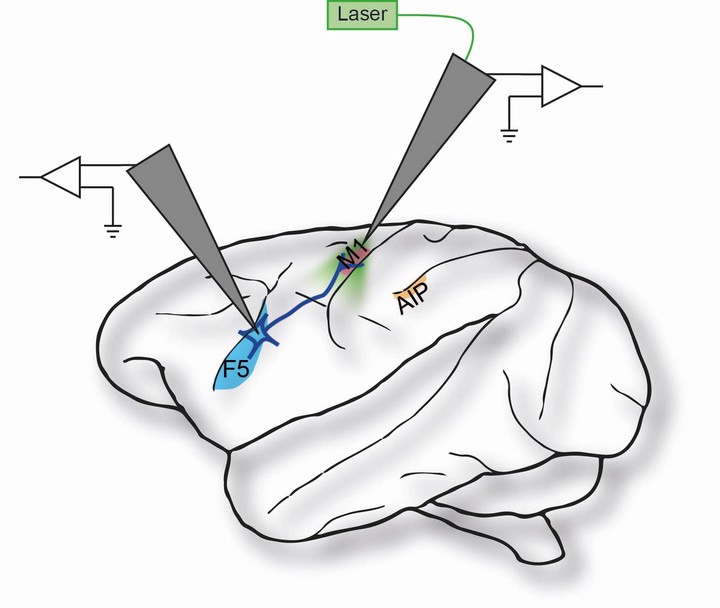Investigation of the primate hand grasping network with pathway-specific neuro-optogenetics

Summary
Drawing not only correlative conclusions, but causal links, between the specific neural components of the hand grasping network involved in the planning and executing of hand grasping movements is essential for the development of neuroprosthetic devices. Accordingly, we are currently applying the emerging approach of optogenetics on the grasping network of behaving monkeys. Neuro-optogenetic tools have recently been established in primates and allow the precise manipulation of neuronal activity with unprecedented temporal, spatial, and cell-type specificity. We combine several behavioral and neural recording methods including neuro-optogenetics, intracortical electrophysiological recordings, and hand kinematic tracking in macaque monkeys while performing a delayed grasping task. We examine the effects of optogenetical stimulation on the local and remote, but directly connected, neuronal activity as well as on hand grasping behavior. Results of this study will likely provide significant new insights on the functional contributions of the fronto-parietal hand grasping network and their causal interconnections. Ultimately, results from these studies could contribute to the development of improved neuroprostheses for impaired patients and the translation of optogenetic methods into the realm of clinical trials for humans.